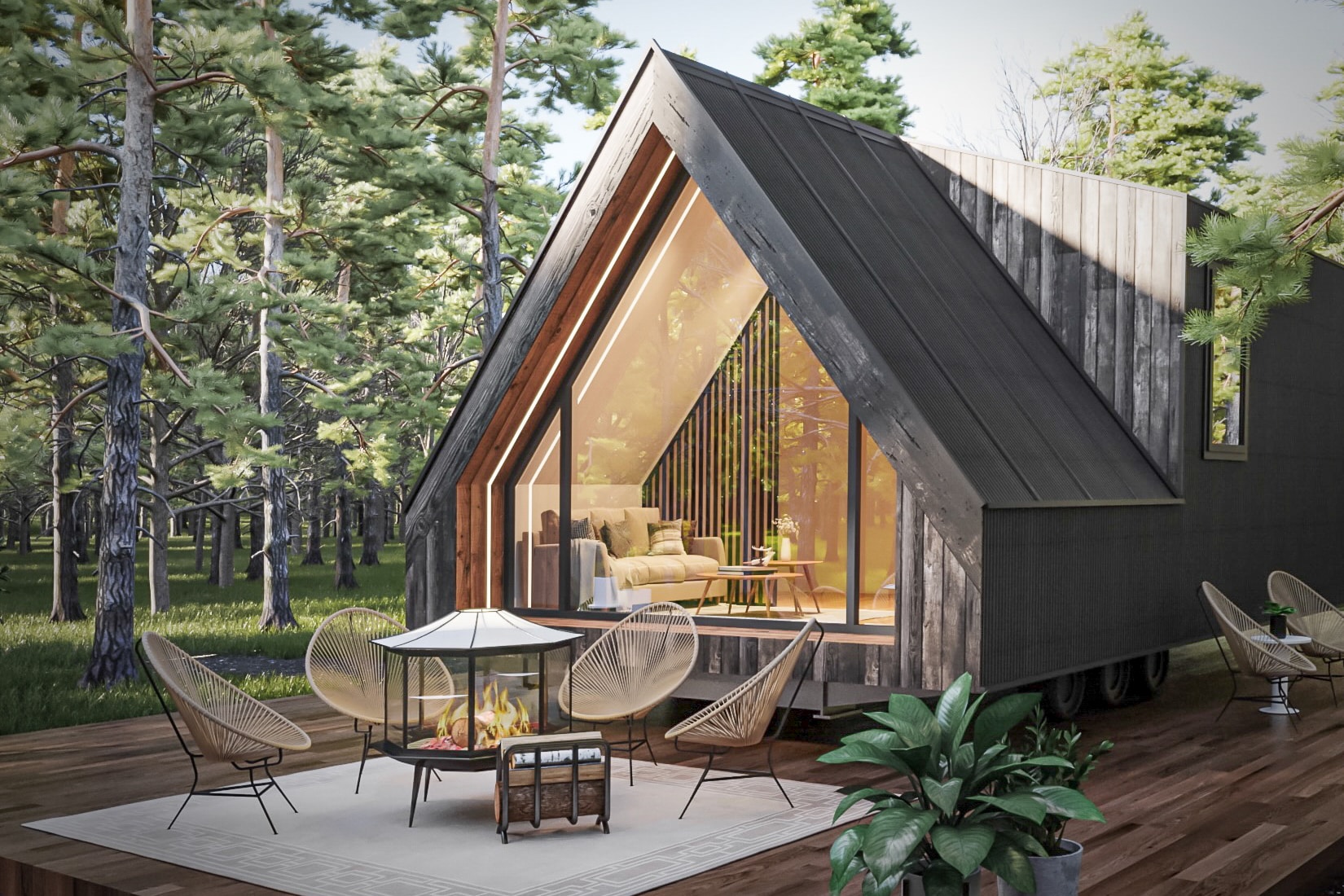
Tiny Home living in Florida has become very popular over the years. Not only has it become many residents’ preferred way of living sustainably, but it allows them to do so without sacrificing comfort. However, important questions still remain for people looking to live in their very own tiny home. What are the tiny home laws in Florida? What is classified as a tiny home? Are Park Models & tiny Homes classified as the same thing? Etc… We’re here to help & answer all these questions & more in this blog!
Florida has some of the most lenient requirements when it comes to tiny homes & Park Models. In Florida, the minimum size & maximum size requirements can vary depending on if the house is built on a permanent foundation or on wheels. The general guidelines based on the Florida Building Code (FBC) & International Residential Code (IRC) state that a home should be around 400 square feet with the ceiling height being a minimum of 6’8″ feet. For tiny homes on permanent foundations, there is no strict “maximum size” defined by the Florida Building Code (FBC), but the “general” requirements by most states and International Residential Code for the maximum size around 400 – 600 square feet.
The exact regulations & requirements may vary from county as well to city or town, so it is best to check in with the municipal office in your area when making a decision about your park model tiny home.
Are Park Models the Same Thing As Tiny Homes?
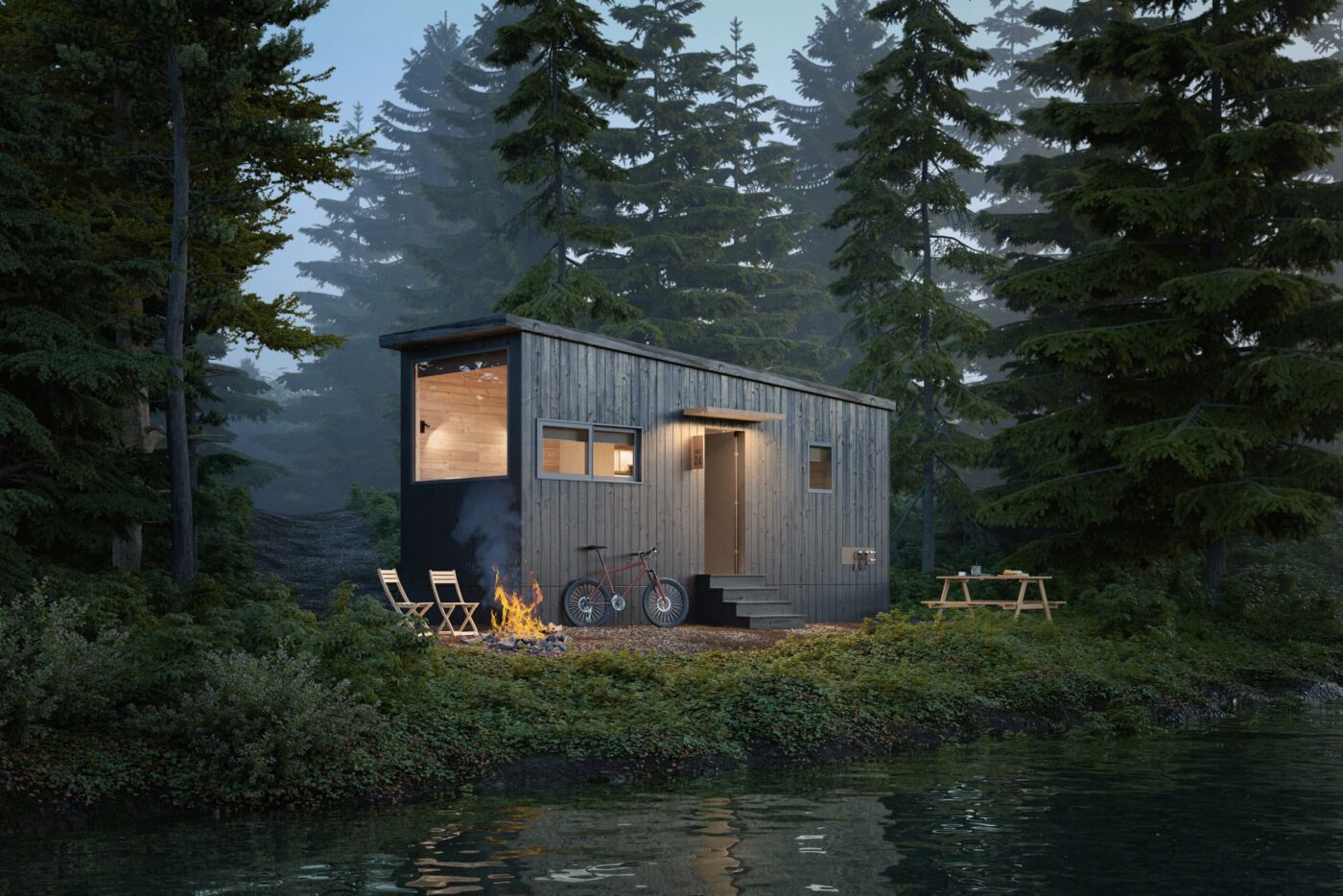
Yes, Park Models are the same thing as tiny homes. Here at Zook Cabins, all of our park-model tiny homes are classified as THOWs. Park Model Homes are classified as recreational vehicles (RVs). These types of homes can not exceed a maximum size of 400 square feet.
While tiny homes like ours are built to RVIA standards, another popular certification is NOAH. To learn more about the differences between the two, check out our blog on RVIA VS NOAH Tiny Homes.
If you’re interested in this topic, keep reading below for more useful information!
What Counties in Florida Allow Tiny Homes?
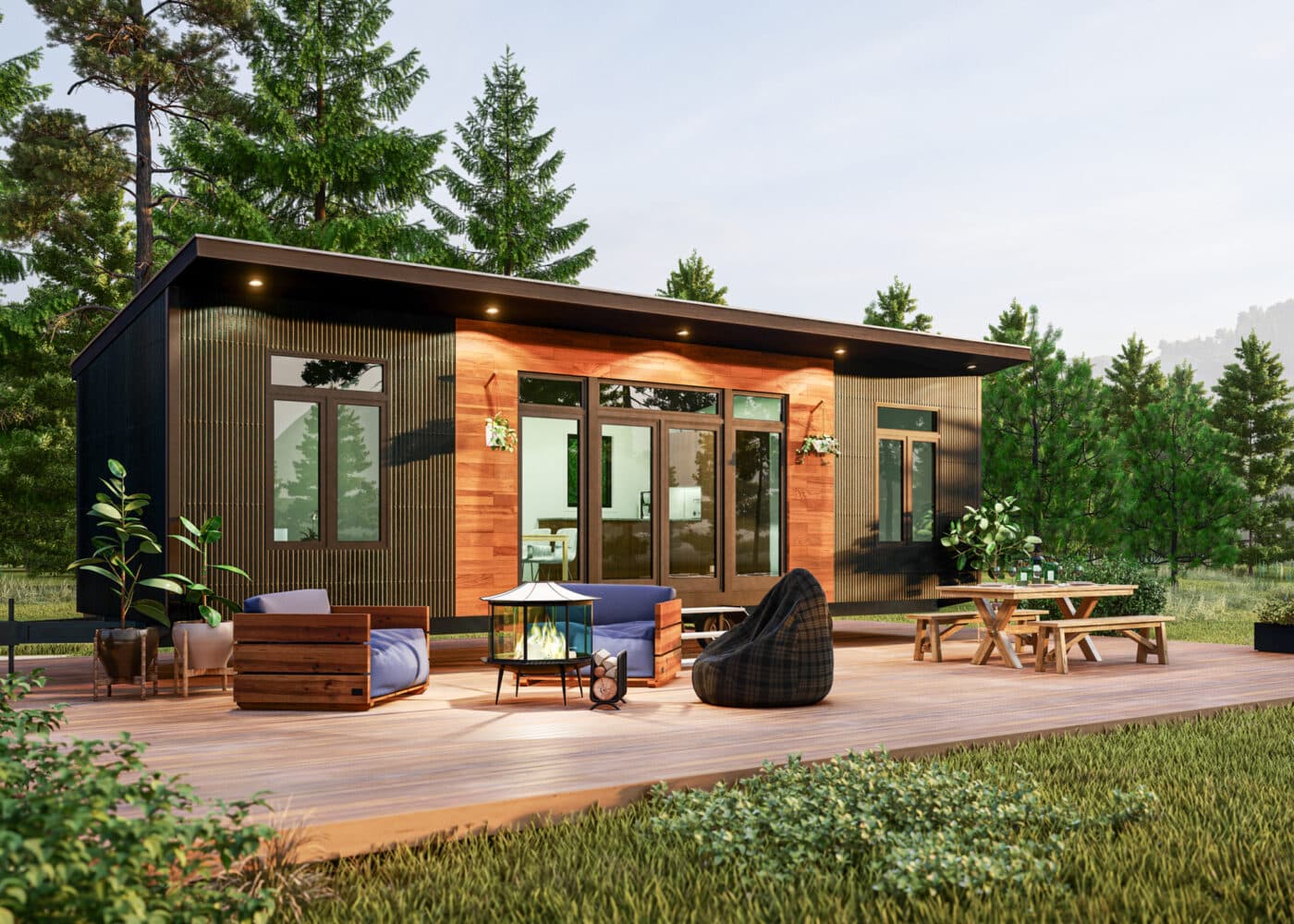
All counties in Florida permit tiny homes, but the codes & regulations may vary. Some counties might be stricter than others. The following list is a comprehensive list of each county’s codes & regulations for tiny homes. Always check the city/town zoning ordinance in your municipality because laws and rules could vary from one place to another.
Does Pasco County, FL Allow Tiny Homes?
Yes. Pasco County follows the Florida Building Code (FBC). According to the regulations & laws set in place, the tiny home must be a maximum size of 400 square feet & a minimum of 6’8” in height. The home must pass inspection & obtain a building permit to receive a certificate of occupancy.
Does Dixie County, FL Allow Tiny Homes?
Yes they do. Dixie County Adheres to the Florida Building Code (FBC), meaning your tiny home can’t be more than 400 square feet in size & requires a minimum ceiling height of 6’8”. To receive the certificate of occupancy the home needs to pass inspections & acquire a buildings permit.
Does Suwannee County, FL Allow Tiny Homes?
Yes. Since Suwannee County also follows the rules & laws of the Florida Building Code (FBC), they require your home to be no more than 400 square feet in size & at least 6’8” in height. Your home will need to obtain a building permit & pass inspection to get the certificate of occupancy.
Does Escambia County, FL Allow Tiny Homes?
Yes, your house must comply with the Florida Building Code (FBC) as Escambia County follows the regulations & laws set in place. it should be at most 400 square feet and have a minimum ceiling height of 6’8”. You will need to obtain a building permit, pass inspections, and receive a Certificate of Occupancy.
Does Wakulla County, FL Allow Tiny Homes?
Yes. Wakulla County has set in place the Florida Building Code (FBC). The code states that the home can’t be larger than 400 square feet & must have a minimum ceiling height of 6’8”. To receive the certificate of occupancy, your home must pass inspection & obtain building permits.
Does Pinellas County, FL Allow Tiny Homes?
Yes, Pinellas County allows tiny homes. The county adheres to the Florida Building Code (FBC), which states that the house needs to be no more than 400 square feet & at least 6 ‘8” in ceiling height. In order to receive your certificate of occupancy, your house will need to pass inspection & obtain a building permit.
Does Orange County, FL Allow Tiny Homes?
Yes, Orange County does allow tiny homes. The state follows the rules & regulations of the Florida Building Code (FBC), which means in order for your home to be classified as a tiny home it must be a maximum of 400 square feet in size & a minimum of 6’8” in height. The house will also need to pass inspections & acquire a building permit to receive the certificate of occupancy.
Does Columbia County, FL Allow Tiny Homes?
Yes. Columbia County follows the laws established by the Florida Building Code (FBC). It’s required for the house to be 400 square feet or less in size & at least 6’8” in ceiling height. In order to obtain a certificate of occupancy, your home will need to pass inspections & have a building permit.
Does Hamilton County, FL Allow Tiny Homes?
Yes, Hamilton County Adheres to the regulations & laws set in place by the Florida Building Code (FBC). This means the home needs to be at least 6’8” in height & a maximum of 400 square feet in size. Your home will need a building permit & has to pass the inspections in order to obtain a certificate of occupancy..
Does Sarasota County, FL Allow Tiny Homes?
Yes, Sarasota County allows tiny homes. The county follows the regulations of the Florida Building Code (FBC), which states that tiny homes must be at least 6’8” in ceiling height & a maximum of 400 square feet in size. In order to qualify for a certificate of occupancy, the house must pass all inspections & obtain a building permit.
Does Alachua County, FL Allow Tiny Homes?
Yes they do. Alachua County adheres to the rules & regulations set forth by the Florida Building Code (FBC). Your tiny home can’t be more than 400 square feet in size & must have a ceiling height of 6’8”. To receive your certificate of occupancy you must secure a building permit & pass all inspections.
Does Baker County, FL Allow Tiny Homes?
Yes. Tiny homes are legal in Baker County. The county adheres to the Florida Building Code (FBC), which states your tiny home needs to be at least 6’8” in ceiling height & 400 square feet or less in size. You must ensure you acquire the proper building permits & pass all inspections in order to qualify for a certificate of occupancy.
Does Bay County, FL Allow Tiny Homes?
Yes, in Bay County tiny homes are perfectly legal. In order to own a tiny home you must make sure your building follows the regulations & laws set in place by the Florida Building Code (FBC). This means that your tiny home can’t be any bigger than 400 square feet in size, and must be at least 6’8” in ceiling height. The home must obtain a building permit & needs to pass all inspections in order to receive a certificate of occupancy.
Does Bradford County, FL Allow Tiny Homes?
Yes. Bradford County allows tiny homes as long as the building follows the requirements & regulations of the Florida Building Code (FBC). This means that the house needs a ceiling height of 6’8” or more, and a maximum size of 400 square feet. To be able to occupy the home you must obtain the building permit along with passing all inspections, and then you will receive a certificate of occupancy.
Does Brevard County, FL Allow Tiny Homes?
Yes. Tiny homes are legal in Brevard County as long as it follows the rules & regulations set in place by the Florida Building Code (FBC), which states that the home can’t be larger than 400 square feet & must have a ceiling height of 6’8”. You must ensure that the home secures a building permit & passes all inspections so you could then receive a certificate of occupancy.
Does Broward County, FL Allow Tiny Homes?
Yes. Broward County allows tiny homes which follow the Florida Building Code (FBC). This means that the tiny home needs to have a maximum 400 square feet of space & ceiling height of at least 6’8”. Make sure you get the proper building permits & pass all house inspections in order to secure a certificate of occupancy.
Does Calhoun County, FL Allow Tiny Homes?
Yes, Tiny Homes are legal in Calhoun County. The state adheres to the Florida Building Code (FBC) which means in order to own a tiny home you must follow a few important rules. The house can’t be more than 400 square feet in size & must have a ceiling height of 6’8’. The home is required to have building permits & needs to pass all inspections to be able to receive a certificate of occupancy.
Does Charlotte County, FL Allow Tiny Homes?
Yes they do. Charlotte County enforces the Florida Building code which has a few requirements. One of the requirements is the size of the house, which can only be a maximum of 400 square feet along with a ceiling height of 6’8” or more. In order to occupy the house the home must obtain a building permit & will have to pass any inspections. This will guarantee you a certificate of occupancy.
Does Citrus County, FL Allow Tiny Homes?
Yes. Citrus County enforces the Florida Building Code (FBC). According to the regulations & laws set in place, the tiny home must be a maximum size of 400 square feet & a minimum of 6’8” in height. The home must pass inspection & obtain a building permit to receive a certificate of occupancy.
Does Clay County, FL Allow Tiny Homes?
Yes. Clay County allows tiny homes as long as the home follows the Florida Building Code (FBC). This means that the tiny home needs to have a maximum 400 square feet of space & ceiling height of at least 6’8”. Make sure you get the proper building permits & pass all house inspections in order to secure a certificate of occupancy.
Does Collier County, FL Allow Tiny Homes?
Yes. Since Collier County also follows the rules & laws of the Florida Building Code (FBC), they require your home to be no more than 400 square feet in size & at least 6’8” in height. Your home will need to obtain a building permit & pass inspection to get the certificate of occupancy.
Does DeSoto County, FL Allow Tiny Homes?
Yes. DeSoto County follows the laws established by the Florida Building Code (FBC). It’s required for the house to be 400 square feet or less in size & at least 6’8” in ceiling height. In order to obtain a certificate of occupancy, your home will need to pass inspections & have a building permit.
Does Duval County, FL Allow Tiny Homes?
Yes, your house must comply with the Florida Building Code (FBC) as Duval County follows the regulations & laws set in place. it should be at most 400 square feet and have a minimum ceiling height of 6’8”. You will need to obtain a building permit, pass inspections, and receive a Certificate of Occupancy.
Does Flagler County, FL Allow Tiny Homes?
Yes they do. Flagler County adheres to the rules & regulations set forth by the Florida Building Code (FBC). Your tiny home can’t be more than 400 square feet in size & must have a ceiling height of 6’8”. To receive your certificate of occupancy you must secure a building permit & pass all inspections.
Does Franklin County, FL Allow Tiny Homes?
Yes. Tiny homes are legal in Franklin County as long as it follows the rules & regulations set in place by the Florida Building Code (FBC), which states that the home can’t be larger than 400 square feet & must have a ceiling height of 6’8”. You must ensure that the home secures a building permit & passes all inspections so you could then receive a certificate of occupancy.
Does Gadsden County, FL Allow Tiny Homes?
Yes, Gadsden County Adheres to the regulations & laws set in place by the Florida Building Code (FBC). This means the home needs to be at least 6’8” in height & a maximum of 400 square feet in size. Your home will need a building permit & has to pass the inspections in order to obtain a certificate of occupancy..
Does Gulf County, FL Allow Tiny Homes?
Yes, Gulf County Adheres to the regulations & laws set in place by the Florida Building Code (FBC). This means the home needs to be at least 6’8” in height & a maximum of 400 square feet in size. Your home will need a building permit & has to pass the inspections in order to obtain a certificate of occupancy..
Does Hardee County, FL Allow Tiny Homes?
Yes they do. Hardee County Adheres to the Florida Building Code (FBC), meaning your tiny home can’t be more than 400 square feet in size & requires a minimum ceiling height of 6’8”. To receive the certificate of occupancy the home needs to pass inspections & acquire a building permit.
Does Hendry County, FL Allow Tiny Homes?
Yes, your house must comply with the Florida Building Code (FBC) as Hendry County follows the regulations & laws set in place. it should be at most 400 square feet and have a minimum ceiling height of 6’8”. You will need to obtain a building permit, pass inspections, and receive a Certificate of Occupancy.
Does Hernando County, FL Allow Tiny Homes?
Yes. Hernando County allows tiny homes, under the rules & regulations set by the Florida Building Code (FBC). This means your house can’t be over 400 square feet & needs to be at least 6’8” ceiling height. In order to receive the certificate of occupancy your house will need to pass all inspections & have a building permit. Note that each area in the county might have different rules set in place, so make sure you check with your city’s zoning & planning department.
Does Highlands County, FL Allow Tiny Homes?
Yes. Highlands County adheres to the rules set in place by the Florida Building Code (FBC). This means your home can’t be over 400 square feet & needs to be at least 6’8” in ceiling height. You will need to obtain a certificate of occupancy by passing all inspections & obtaining a building permit. Each area in the area in the county might have different regulations & rules, so make sure you check with your zoning & building department.
Does Hillsborough County, FL Allow Tiny Homes?
Yes, Hillsborough County allows tiny homes. The county follows the regulations of the Florida Building Code (FBC), which states that tiny homes must be at least 6’8” in ceiling height & a maximum of 400 square feet in size. In order to qualify for a certificate of occupancy, the house must pass all inspections & obtain a building permit.
Does Holmes County, FL Allow Tiny Homes?
Yes, Holmes County Adheres to the regulations & laws set in place by the Florida Building Code (FBC). This means the home needs to be at least 6’8” in height & a maximum of 400 square feet in size. Your home will need a building permit & has to pass the inspections in order to obtain a certificate of occupancy.
Does Indian River County, FL Allow Tiny Homes?
Yes, Indian River County does allow tiny homes. The state follows the rules & regulations of the Florida Building Code (FBC), which means in order for your home to be classified as a tiny home it must be a maximum of 400 square feet in size & a minimum of 6’8” in height. The house will also need to pass inspections & acquire a building permit to receive the certificate of occupancy.
Does Jackson County, FL Allow Tiny Homes?
Yes, Jackson County does allow tiny homes. Tiny homes have to follow the Florida Building Code (FBC), which state that tiny homes should be a maximum 400 square feet along with a minimum ceiling height of 6 ‘8 “. To obtain the certificate of occupancy, you must acquire a building permit & pass the inspection! But, it’s still important to double check the local zoning & permits laws with the local Planning & Zoning department.
Does Jefferson County, FL Allow Tiny Homes?
Yes, like many of the counties in Florida, Jefferson County states that tiny homes must follow the Florida Building Code (FBC). Tiny Homes must be 400 square feet or less. They require a certificate of occupancy, and a minimum ceiling height of 6’8”. You must pass all the inspections and acquire the building permits to be able to finish the process & obtain the certificate of occupancy.
Does Lake County, FL Allow Tiny Homes?
Yes they do. Lake County Adheres to the Florida Building Code (FBC), meaning your tiny home can’t be more than 400 square feet in size & requires a minimum ceiling height of 6’8”. To receive the certificate of occupancy the home needs to pass inspections & acquire a building permit.
Does Lee County, FL Allow Tiny Homes?
Yes. Tiny homes are legal in Lee County as long as it follows the rules & regulations set in place by the Florida Building Code (FBC), which states that the home can’t be larger than 400 square feet & must have a ceiling height of 6’8”. You must ensure that the home secures a building permit & passes all inspections so you could then receive a certificate of occupancy.
Does Leon County, FL Allow Tiny Homes?
Yes they do. Leon County adheres to the rules & regulations set forth by the Florida Building Code (FBC). Your tiny home can’t be more than 400 square feet in size & must have a ceiling height of 6’8”. To receive your certificate of occupancy you must secure a building permit & pass all inspections.
Does Levy County, FL Allow Tiny Homes?
Yes they do. Levy County Adheres to the Florida Building Code (FBC), meaning your tiny home can’t be more than 400 square feet in size & requires a minimum ceiling height of 6’8”. To receive the certificate of occupancy the home needs to pass inspections & acquire a buildings permit,
Does Liberty County, FL Allow Tiny Homes?
Yes, Liberty County does allow tiny homes. Tiny homes have to follow the Florida Building Code (FBC), which state that tiny homes should be a maximum 400 square feet along with a minimum ceiling height of 6 ‘8 “. To obtain the certificate of occupancy, you must acquire a building permit & pass the inspection! But, it’s still important to double check the local zoning & permits laws with the local Planning & Zoning department.
Does Madison County, FL Allow Tiny Homes?
Yes, Tiny Homes are legal in Madison County. The state adheres to the Florida Building Code (FBC) which means in order to own a tiny home you must follow a few important rules. The house can’t be more than 400 square feet in size & must have a ceiling height of 6’8’. The home is required to have building permits & needs to pass all inspections to be able to receive a certificate of occupancy.
Does Manatee County, FL Allow Tiny Homes?
Yes. Manatee County enforces the Florida Building Code (FBC). According to the regulations & laws set in place, the tiny home must be a maximum size of 400 square feet & a minimum of 6’8” in height. The home must pass inspection & obtain a building permit to receive a certificate of occupancy.
Does Marion County, FL Allow Tiny Homes?
Yes, Tiny Homes are legal in Marion County. The state adheres to the Florida Building Code (FBC) which means in order to own a tiny home you must follow a few important rules. The house can’t be more than 400 square feet in size & must have a ceiling height of 6’8’. The home is required to have building permits & needs to pass all inspections to be able to receive a certificate of occupancy.
Does Martin County, FL Allow Tiny Homes?
Yes. Martin County follows the Florida Building Code (FBC). According to the regulations & laws set in place, the tiny home must be a maximum size of 400 square feet & a minimum of 6’8” in height. The home must pass inspection & obtain a building permit to receive a certificate of occupancy.
Does Miami-Dade County, FL Allow Tiny Homes?
Yes they do. Miami-Dade County adheres to the rules & regulations set forth by the Florida Building Code (FBC). Your tiny home can’t be more than 400 square feet in size & must have a ceiling height of 6’8”. To receive your certificate of occupancy you must secure a building permit & pass all inspections.
Does Monroe County, FL Allow Tiny Homes?
Yes, Tiny Homes are legal in Monroe County. The state adheres to the Florida Building Code (FBC) which means in order to own a tiny home you must follow a few important rules. The house can’t be more than 400 square feet in size & must have a ceiling height of 6’8’. The home is required to have building permits & needs to pass all inspections to be able to receive a certificate of occupancy.
Does Nassau County, FL Allow Tiny Homes?
Yes they do. Nassau County enforces the Florida Building code which has a few requirements. One of the requirements is the size of the house, which can only be a maximum of 400 square feet along with a ceiling height of 6’8” or more. In order to occupy the house the home must obtain a building permit & will have to pass any inspections. This will guarantee you a certificate of occupancy.
Does Okaloosa County, FL Allow Tiny Homes?
Yes, Okaloosa County does allow tiny homes. Tiny homes have to follow the Florida Building Code (FBC), which state that tiny homes should be a maximum 400 square feet along with a minimum ceiling height of 6 ‘8 “. To obtain the certificate of occupancy, you must acquire a building permit & pass the inspection! But, it’s still important to double check the local zoning & permits laws with the local Planning & Zoning department.
Does Okeechobee County, FL Allow Tiny Homes?
Yes, your house must comply with the Florida Building Code (FBC) as Okeechobee County follows the regulations & laws set in place. it should be at most 400 square feet and have a minimum ceiling height of 6’8”. You will need to obtain a building permit, pass inspections, and receive a Certificate of Occupancy.
Does Osceola County, FL Allow Tiny Homes?
Yes, Tiny Homes are legal in Osceola County. The state adheres to the Florida Building Code (FBC) which means in order to own a tiny home you must follow a few important rules. The house can’t be more than 400 square feet in size & must have a ceiling height of 6’8’. The home is required to have building permits & needs to pass all inspections to be able to receive a certificate of occupancy.
Does Palm Beach County, FL Allow Tiny Homes?
Yes they do. Palm Beach County adheres to the rules & regulations set forth by the Florida Building Code (FBC). Your tiny home can’t be more than 400 square feet in size & must have a ceiling height of 6’8”. To receive your certificate of occupancy you must secure a building permit & pass all inspections.
Does Polk County, FL Allow Tiny Homes?
Yes they do. Polk County Adheres to the Florida Building Code (FBC), meaning your tiny home can’t be more than 400 square feet in size & requires a minimum ceiling height of 6’8”. To receive the certificate of occupancy the home needs to pass inspections & acquire a buildings permit.
Does Putnam County, FL Allow Tiny Homes?
Yes. Putnam County allows tiny homes as long as the home follows the Florida Building Code (FBC). This means that the tiny home needs to have a maximum 400 square feet of space & ceiling height of at least 6’8”. Make sure you get the proper building permits & pass all house inspections in order to secure a certificate of occupancy.
Does St. Johns County, FL Allow Tiny Homes?
Yes, Tiny Homes are legal in St. Johns County. The state adheres to the Florida Building Code (FBC) which means in order to own a tiny home you must follow a few important rules. The house can’t be more than 400 square feet in size & must have a ceiling height of 6’8’. The home is required to have building permits & needs to pass all inspections to be able to receive a certificate of occupancy.
Does St. Lucie County, FL Allow Tiny Homes?
Yes. St. Lucie County allows tiny homes as long as the building follows the requirements & regulations of the Florida Building Code (FBC). This means that the house needs a ceiling height of 6’8” or more, and a maximum size of 400 square feet. To be able to occupy the home you must obtain the building permit along with passing all inspections, and then you will receive a certificate of occupancy
Does Santa Rosa County, FL Allow Tiny Homes?
Yes, Santa Rosa allows tiny homes. The county adheres to the Florida Building Code (FBC), which states that the house needs to be no more than 400 square feet & at least 6 ‘8” in ceiling height. In order to receive your certificate of occupancy, your house will need to pass inspection & obtain a building permit.
Does Sumter County, FL Allow Tiny Homes?
Yes. Tiny homes are allowed in Sumter County. If you are planning to buy one, there are some things that you have to remember. It should not exceed 400 square feet and the ceiling must be at least 6 feet 8 inches high. Another thing is that you need building permits for it and every inspection should pass before getting a certificate of occupancy. These criteria were made so as to make sure that the tiny house complies with Florida Building Code (FBC).
Does Taylor County, FL Allow Tiny Homes?
Yes, in Taylor County, tiny houses are allowed! According to the Florida Building Code (FBC), which states that they should not exceed 400 sq ft and must have a minimum ceiling height of at least 6 ‘8″. There are some other steps you need to take too — like getting your building permit and passing inspections before being issued with a certificate of occupancy.
Does Union County, FL Allow Tiny Homes?
Yes! Tiny Homes are allowed in Union County. Florida Building Code (FBC) is practiced in the state, so there are some key requirements that you must meet to possess such a house. The size of the building has to be less than 400 square feet and it should have a minimum ceiling height of 6 feet 8 inches. You also need to get building permits and pass all inspections for a certificate of occupancy.
Does Volusia County, FL Allow Tiny Homes?
Yes. Tiny homes are allowed in Volusia County. If you are planning to buy one, there are some things that you have to remember. It should not exceed 400 square feet and the ceiling must be at least 6 feet 8 inches high. Another thing is that you need building permits for it and every inspection should pass before getting a certificate of occupancy. These criteria were made so as to make sure that the tiny house complies with Florida Building Code (FBC).
Does Walton County, FL Allow Tiny Homes?
Yes, in Walton County, tiny houses are allowed! According to the Florida Building Code (FBC), which states that they should not exceed 400 sq ft and must have a minimum ceiling height of at least 6 ‘8″. There are some other steps you need to take too — like getting your building permit and passing inspections before being issued with a certificate of occupancy.
Does Washington County, FL Allow Tiny Homes?
Yes, Tiny Homes are legal in Washington County. The state adheres to the Florida Building Code (FBC) which means in order to own a tiny home you must follow a few important rules. The house can’t be more than 400 square feet in size & must have a ceiling height of 6’8’. The home is required to have building permits & needs to pass all inspections to be able to receive a certificate of occupancy.
Find Your Tiny Home Regulations in Florida by City
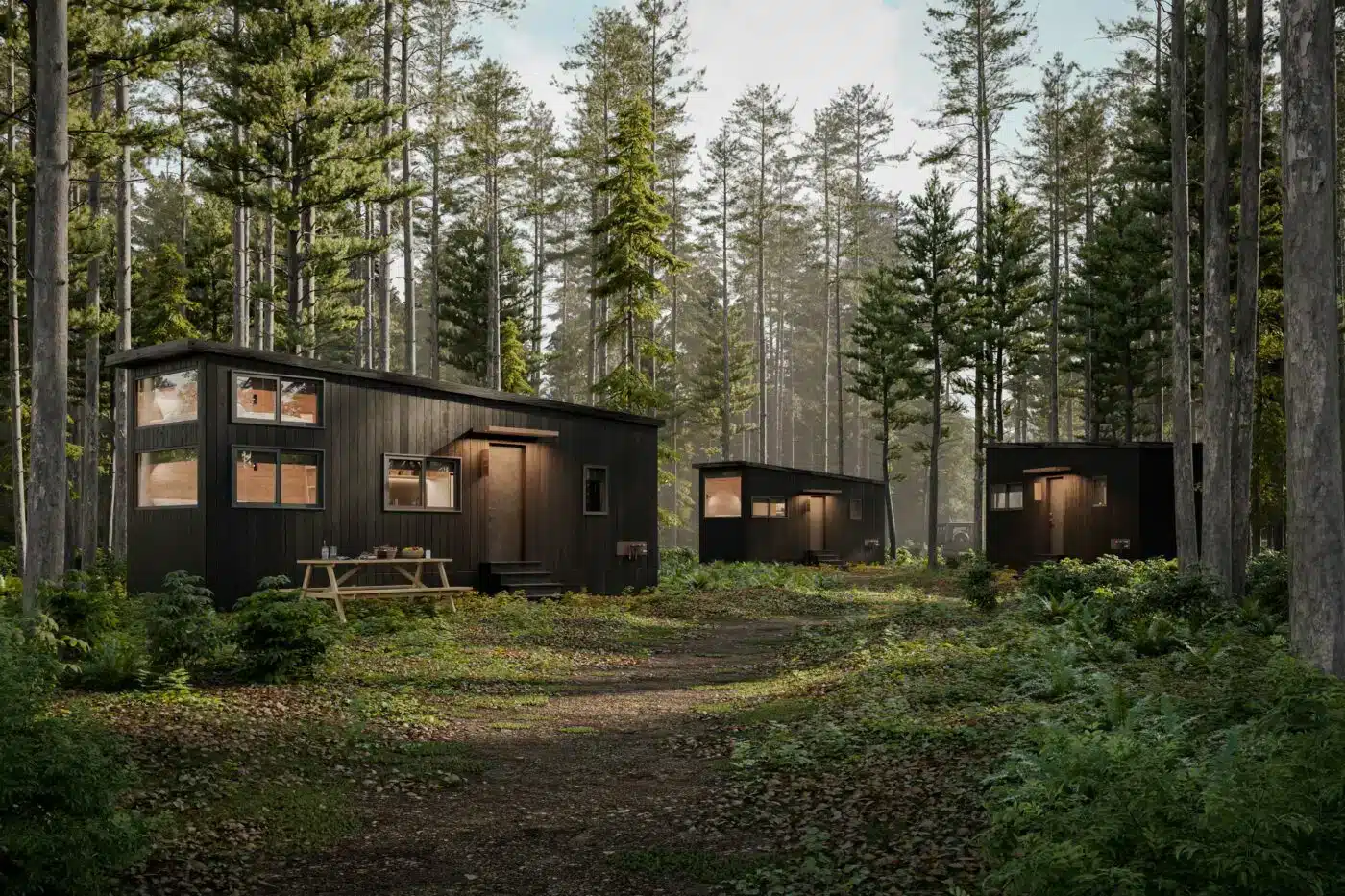
Click on one of the cities below to learn more about their specific laws & regulations.
Does St. Petersburg, FL Allow Tiny Homes?
Yes. The City follows rules set by the Florida Building Code (FBC), which means the home must be at least 6’8” in ceiling height & a maximum of 400 square feet. To receive the certificate of occupancy, your home must pass all inspections & obtain a building permit. Beware that the codes & regulations do vary in each area of the city as well, so make sure you check with your city’s zoning coordinator.
Does Orlando, FL Allow Tiny Homes?
Yes. Orlando City allows tiny homes, under the rules & regulations set by the Florida Building Code (FBC). This means your house can’t be over 400 square feet & needs to be at least 6’8” ceiling height. In order to receive the certificate of occupancy your house will need to pass all inspections & have a building permit. Note that each area in the city might have different rules set in place, so make sure you check with your city’s zoning & planning department.
Does Tampa, FL Allow Tiny Homes?
Yes, Tampa allows tiny homes. The city adheres to the rules set by the Florida Building Code (FBC). The home has to be no more than 400 square feet & needs to have a ceiling height of 6’8” or more. The home will need to pass all inspections & secure a building permit in order to receive a certificate of occupancy. However, double check in with your city’s zoning & planning department as each area in the city might have different rules & regulations set in place.
Does Sarasota, FL Allow Tiny Homes?
Yes, Sarasota allows tiny homes as long as your home follows the rules set in place by the Florida Building Code (FBC). This means your house needs to have a ceiling height of 6’8” and a maximum size of 400 square feet. In order to obtain your certificate of occupancy your house will need to pass all inspections & secure a building permit. Make sure you check with your city’s zoning & building department, as each area in the city might have different rules in place.
Does Tallahassee, FL Allow Tiny Homes?
Yes. Tallahassee adheres to the rules set in place by the Florida Building Code (FBC). This means your home can’t be over 400 square feet & needs to be at least 6’8” in ceiling height. You will need to obtain a certificate of occupancy by passing all inspections & obtaining a building permit. Each area in the city might have different regulations & rules, so make sure you check with your zoning & building department.
Can I live In a Park Model Home In Florida?
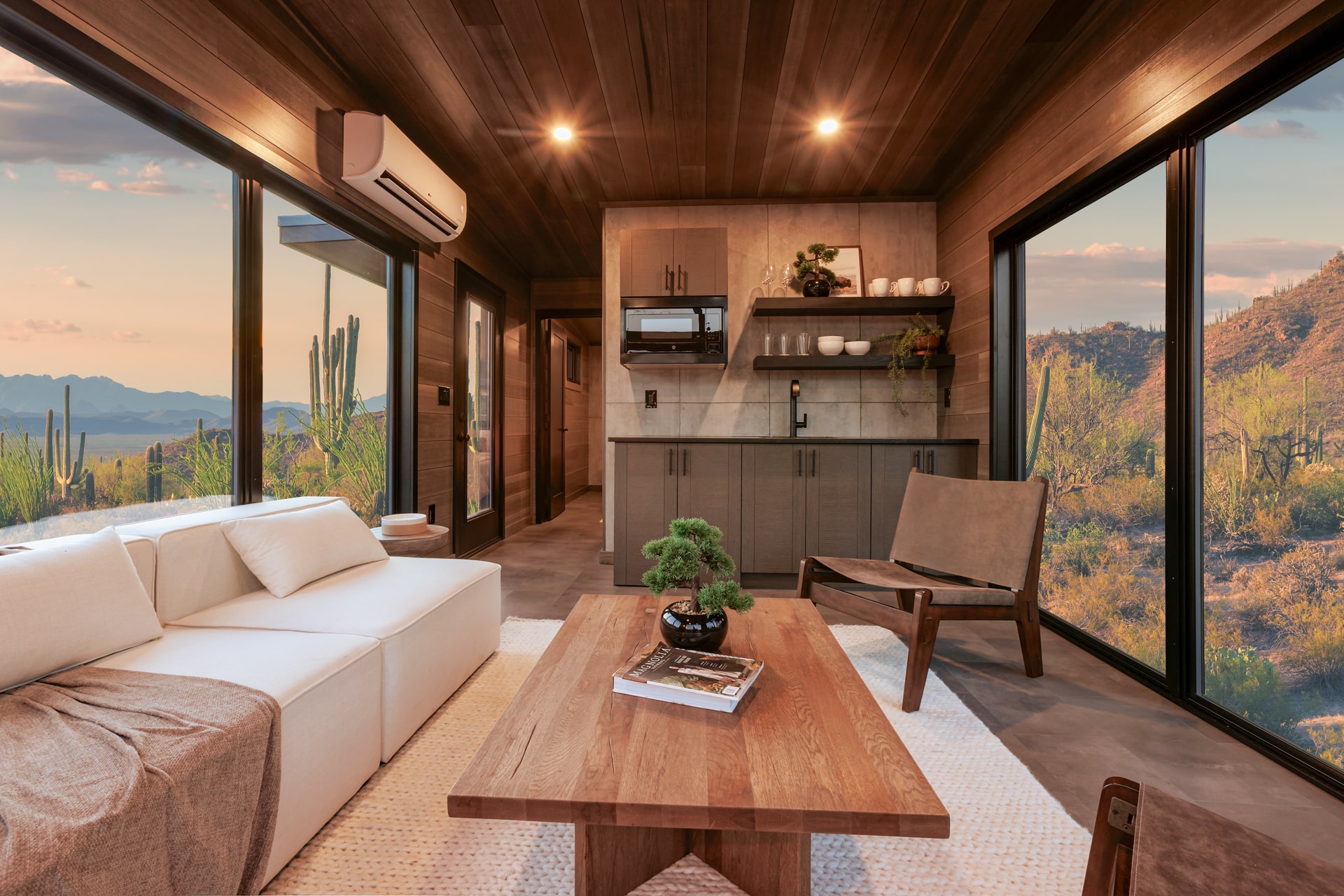
Yes you may live in a Park Model Home in the state of Florida. Our Park Model Homes are treated & classified as recreational vehicles (RVs). However, you will need to check with your city’s zoning & building department to make sure the area you’d like to reside in is following the laws & regulations.
- Zoning and Regulations: Verify your local zoning laws and regulations before moving into a Park Model Home, as some counties and towns may have different regulations & rules. Park Model Homes are subject to different laws and regulations than traditional homes because they are classified as recreational vehicles.
- Permits: Registration and titling must be done before you can move or reside in the Park Model Home because it is categorized as an RV. Moreover, a building permit may also be mandatory for Park Model Home in some counties or cities.
- Inspection Requirements: Your Park Model Home may also require inspections to be conducted before being ready for occupancy. These may include inspecting things such as construction and safety standards and also essential inspections that could range from foundation, structure, and electrical to plumbing inspections.
- Utility Connections: Make sure that water, electricity, and sewage utilities can be connected to your Park Model Home. Some RV parks offer these connections; otherwise, you must verify that this service is available on private land.
What Counties in Florida Do Not Allow Tiny Homes?
In Florida, the rules & regulations regarding tiny homes vary from each county & city. Although there are no rules set in place that prohibits tiny homes in any county, some counties might have stricter rules in place. Check with your local zoning & building department to learn about the rules & regulations in your area.
General Notes to keep in mind
Building Codes: Tiny Homes must be built to adhere to the rules set by the Florida Building Code (FBC). Which means, the tiny home must meet the requirements such as: Size of the home, proper ceiling height, emergency exits, etc.
Zoning: Varies greatly. Some cities & counties allow them as ADUs in single-family residential zones. Some may restrict them to areas such as RV parks. You will need to check with your city’s zoning & building department.
Permits and Inspections: Your tiny home must pass all inspections & needs to secure building permits in order to obtain a certificate of occupancy.
Are There Tiny Home Communities in Florida?
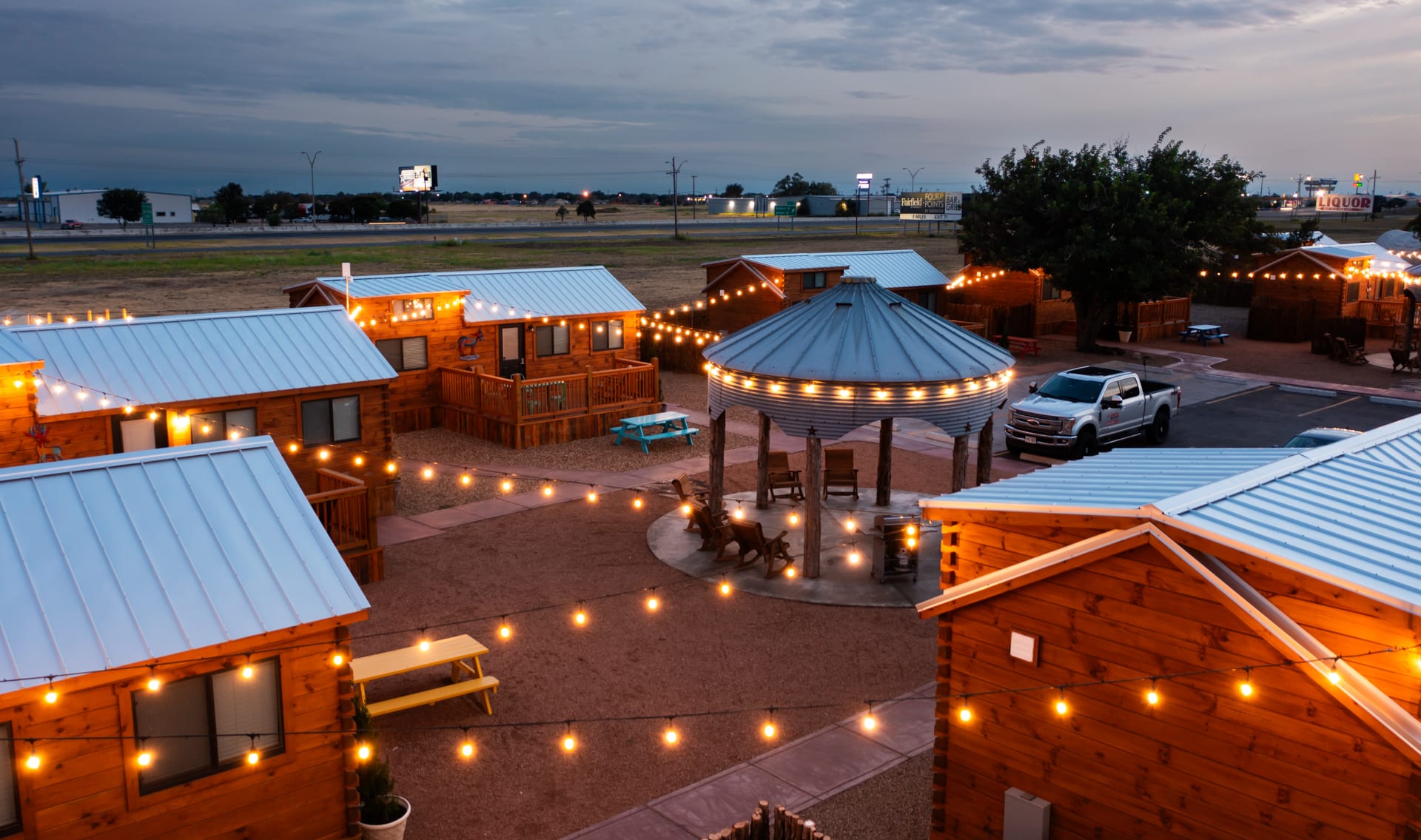
Of course, Florida is known for its many tiny home communities! Being a part of these communities offers many opportunities & benefits. It makes it easier for anyone who wants to be a part of the tiny home life, as you’ll have much support & help close to you, plus many amenities & perks are offered in these communities! Here’s just some of the few tiny home communities:
Orlando Lakefront at College Park
Location: Orlando, Florida
Orlando Lakefront at College Park is a known tiny home community in the heart of Orlando, Florida. This community combines urban convenience with serene lakeside tranquility to provide this unique and picturesque setting for a tiny home.
Tiny House Siesta
Located: Sarasota, Florida
Tiny House Siesta is a beautiful tiny home community located in Siesta Key, Florida. They offer a unique selection of tiny homes for rent for guests looking to experience the tiny home lifestyle in the beautiful setting of Siesta Key. Close to many local restaurants & attractions is a great choice for anyone looking to experience tiny home living in a scenic & relaxing environment
Gracious Tiny House Park
Located: Okeechobee, Florida
It’s a quiet spot but with an easy connection to nature and with many outdoor activities available. It’s perfect for those who value a tranquil setting and enjoy the wonders of the great outdoors.
Circle Pond
Located: Ruskin, Florida
Circle Pond Tiny Community is a dedicated tiny home neighborhood in Ruskin, Florida. Set in a quiet and picturesque area, the location offers a serene living environment with easy access to nearby amenities and a life of simplicity, sustainability, and community living.
Benefits Of Living in the Communities:
Affordability: As it stands, tiny homes communities are much more affordable when viewed against the cost of living in a big city; this makes them an economically viable option.
Sustainability: A majority of the communities hold a focus on living sustainably, which will encourage measures such as the use of renewable energy, community gardens, taking care of surrounding environment & overall a simpler way of living that results in nature-friendly lifestyle.
Community Living: Tiny home communities offer support for those not wanting to live all alone, shared spaces to socialize and engage in outdoor activities will help keep you stay active & enjoy the beautiful community.
Simplicity: Living in a Park Model Home promotes a more simplified life by reducing clutter and fostering basic living, all resulting in a life with less stress but more fulfillment.
Frequently Asked Questions About Florida Tiny House Laws:
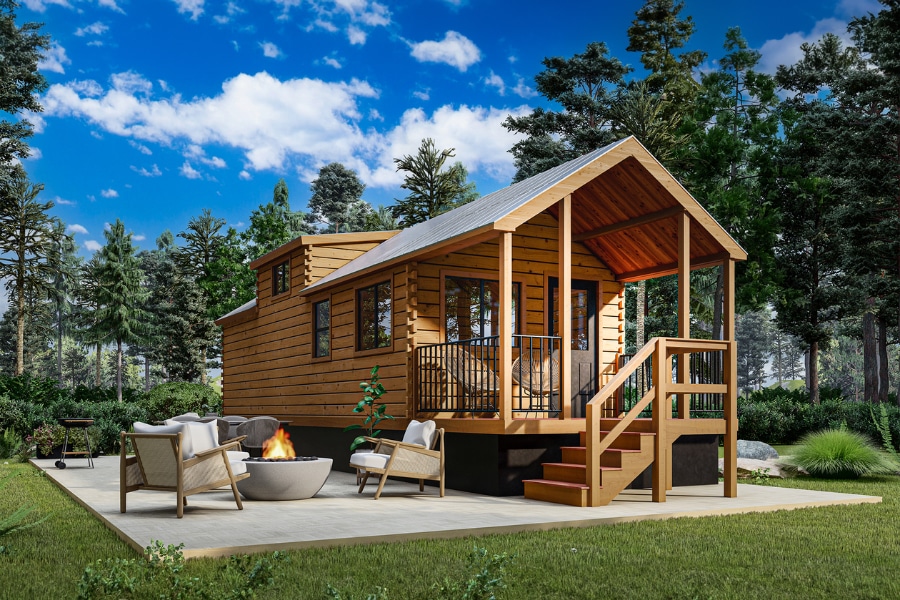
How Much Does it Cost to Build a Tiny House in FL?
The usual range for a tiny house in Florida would be around $30,000 to $60,000. For more luxury & high end homes the price increases to the range of $90,000 to $100,000. If you’d like a more detailed breakdown of the pricing options, you can check out this article which offers a cost breakdown for one of our Park Model Homes, or don’t hesitate to request a free quote on your tiny home today!
Can A Park Model Tiny Homes Have Multiple Bedrooms and Bathrooms?
Yes they can! Park Model Homes can have multiple bedrooms and bathrooms. There are, however, some restrictions on the number of bedrooms and bathrooms because of space. After all, Park Modes are usually about 400 square feet. Creative design solutions are needed to make them fit into that kind of square footage. At Zook Cabins we do offer multiple Park Model Home styles with 2 bedrooms! For example take a look at the “Nook Family Park Model Home” or “The Cascade Park Model Home” both with 2 bedrooms & plenty of living space!
What Features Are Included In A Park Model Home From Zook Cabins?
Well, where do we even begin? Our Park Model Homes are one of a kind, whether you’re looking for cozy & quaint rustic cabins, or more modern & luxurious cabins, we have you covered.
Customization:
- From 10 selections to choose from, you’ll find one that catches your eye. Get to design your home, from floor plans to the interior design. You have the freedom to create a home that suits your preferences!
Size and Features:
- Each of our Park Model Homes range from 200 square feet to 400 square feet, proving a cozy and comfortable space
- We finish each home with high quality furnishings, including essentials such as a toilet, faucets, shelving, light fixtures and more.
Variety of Styles:
- Choose from a unique selection of style, whether it’s a charming rustic home or more modern & luxury home, we have it all. You’ll find a Park Model Home that fits your aesthetics preferences.
What size must a house Be to qualify as a tiny home?
There is no definitive answer for this question in Florida. The usual range is between 100 – 400 square feet, with some homes being as small as 75 square feet in Florida.
What is the most Affordable Place to place my Park Model Tiny home In Florida?
Finding the most affordable location for your tiny home is hard, but we’re here to guide you! There are several factors to find the cheapest place such as land costs, availability of utilities, zoning regulations, and community amenities. Most important thing would be is finding a good area with affordable land costs & managing the cost of utilities, transportation & other services as well. Best pricing is usually near rural areas & tiny home communities.
Is There A Minimum Size My Tiny Home Must Be In Florida?
This is a bit of a gray area. The minimum size requirements for houses in the state of Florida vary widely. For example, this is only a rare case, but some places could require a minimum 1,500 square feet if it’s in a certain area & some might not even have a minimum size. The Florida Building Code (FBC) states that the minimum size for habitable rooms is 70 square feet, but in some certain local zoning ordinances, it could be vastly different. To locate a site that will be friendly to your tiny house, research counties with no minimum footage requirement, and check local zoning laws.
Are Park Model Tiny Homes A Good Investment?
Absolutely! Many of our clients have successfully rented out their properties, and the short-term rental market continues to soar with no signs of slowing down. There’s never been a better time to invest in real estate. Our clients have seen great success renting their custom-built cabins on platforms like Airbnb and other popular hosting sites.
For instance, Bobby Lee and Andrew transformed 11 Park Model houses into a thriving RV camp, showcasing the incredible potential of this investment. If you’re considering entering the real estate market, now is the perfect time to explore the possibilities.
What are utility bills like in a tiny house?
The utility bills for a Tiny Home are generally much lower compared to traditional homes or apartments because of the size difference & efficient use of the amenities. The usual answer for the utility bills is around $50 for many tiny home residents, which is basically the fraction of the price compared to a traditional home. This makes it an amazing option if you’re looking to reduce your bill expense & live a sustainable lifestyle.
Is living in a tiny house comfortable and practical?
Yes it is! Although, it depends on your personal preferences & lifestyle. With an efficient design you can make your home comfortable & practical, so it suits you. The key is to prioritize the use of storage management & useful furnishings to help with functionality.
What do other states require for tiny living?
Want to know what other states have to say about living in a tiny home? Check out the table below and see where else you can enjoy tiny living.
